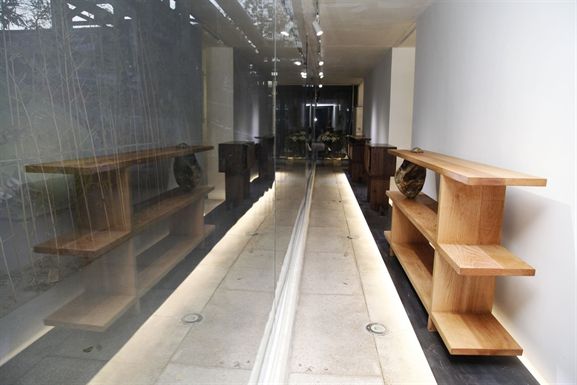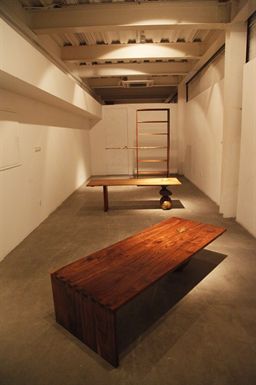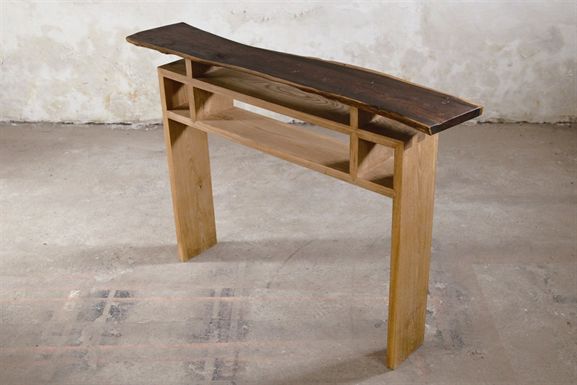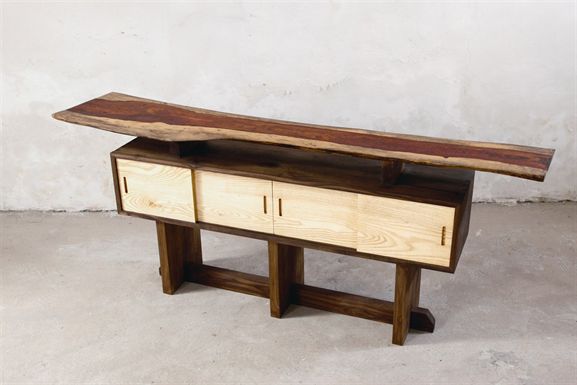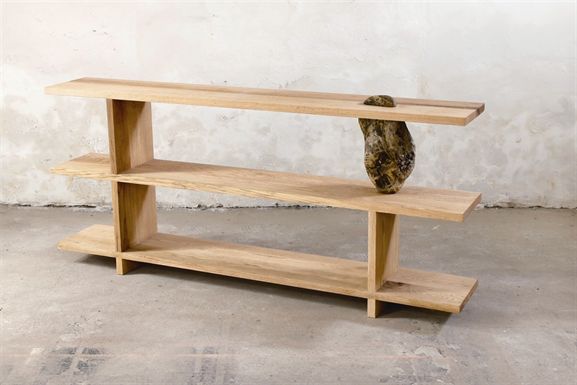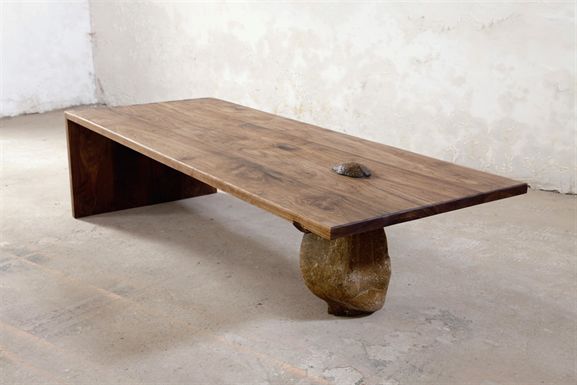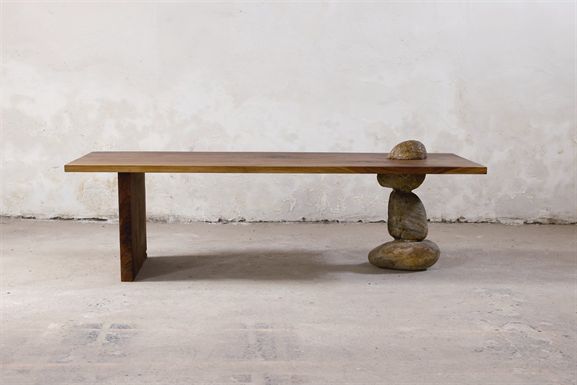Rehabilitation – 2013
Nov 16 - Dec 15, 2013
Nov 16 - Dec 15, 2013
Press Release
After Kim jintaek’s Solo Exhibition "Use of the Useless" had held in the White Box Museum of Art in 2012 , his brand new Solo Exhibition "Rehabilitation- 2013" will be held grand show at the Project Space on the second floor of the museum in November 16.
The exhibition is planned by Zhao Huiding, the opening time is November 16, 2013, and will be on until December 15, 2013.In February this year, Kim jintaek resolutely give up stable life, settle down in Beijing this unfamiliar city. To find lost himself, he intends to put himself from the state of the familiar and comfortable, putting myself in a strange and helpless.For Kim jintaek ,struggle with the strange environment is a process of self perfection. The result of the science of uniting will display in the exhibition. This series of works from the collected materials to processing and grinding oil and so on trivial work, all done by one artist.
CURATOR: Cho Hyejung
PRESENTED BY: Sun Yongzeng
EXHIBITION DIRECTOR: Liu Chenya
EXHIBITION COOPERATION: Cao Maochao、Zhang Dan
GRAPHIC DESIGNER: Kim Jintaek
ORGANIZER: White Box Museum of Art OPENING: 3pm, 15th of November, 2013
DATE: November 16- December 15, 2013
MUSEUM OPENING HOURS: 10:00- 18:00, Tuesday- Sunday
VENUE: 798 Art Dist., No.2 Jiu Xianqiao Road, Chaoyang Dist., Beijing, China
T: +86-10-5978 4800 Website: www.798whitebox.com
The exhibition is planned by Zhao Huiding, the opening time is November 16, 2013, and will be on until December 15, 2013.In February this year, Kim jintaek resolutely give up stable life, settle down in Beijing this unfamiliar city. To find lost himself, he intends to put himself from the state of the familiar and comfortable, putting myself in a strange and helpless.For Kim jintaek ,struggle with the strange environment is a process of self perfection. The result of the science of uniting will display in the exhibition. This series of works from the collected materials to processing and grinding oil and so on trivial work, all done by one artist.
CURATOR: Cho Hyejung
PRESENTED BY: Sun Yongzeng
EXHIBITION DIRECTOR: Liu Chenya
EXHIBITION COOPERATION: Cao Maochao、Zhang Dan
GRAPHIC DESIGNER: Kim Jintaek
ORGANIZER: White Box Museum of Art OPENING: 3pm, 15th of November, 2013
DATE: November 16- December 15, 2013
MUSEUM OPENING HOURS: 10:00- 18:00, Tuesday- Sunday
VENUE: 798 Art Dist., No.2 Jiu Xianqiao Road, Chaoyang Dist., Beijing, China
T: +86-10-5978 4800 Website: www.798whitebox.com
Curator Article
“Rehabilitation” and “Furniture” are the most important factors among Zhenzhai Jin’s creations. Rehabilition-2013, his new series of works, is exhibited this year after Rehabilitation-Returning Home in 2012. In Rehabilitation-Returning Home, Jin is faced with general social problems from macroscopic view, questioning the modern values and social structure, and attempts to cure those who are hurt and shackled by the adverse. But what he tries to rehabilitate in Rehabilitation-2013, is himself, another kind of self that is ever lost.
Jin had been engaged in carpenter’s work long before he studied in sculptures. What arts academy taught, whose educational system is centuries regular, were how to master the languages of sculptures; and what carpenter’s work brought him, was how to respect the materials----approach the wood naturally. Two kind of experience merged together and then came into being the extraordinary style. When coming into contact with sculptures, he was wild about various materials and made a search after the creation activities without limitations of any materials and medium. He paid special attention to the physical property of different materials, and sought the most effective way to reveal the substantial characteristic of materials. Besides, he kept his eye on the by-products because of the evolution of era and social, such as the abandoned lumber in the process of urbanization and the useless farm implements due to the changes of agricultural production mode, and used them to create, making them maintain their vitality.
Although Modern lifestyles bring us convenience, it let us stand still and refuse to make progress at the same time. Based on rationality, we accelerate our pace of chasing and choose to live easily, which leads to a phenomenon that the modern society is crept with fast-food pattern. People cannot be devoted to one certain thing and pursue its profundity when living in this circumstance. In contrast, they wish to obtain more extensive as fast as possible. Almost no one can avoid being influenced by the atmosphere in this fickle social trend. Thus, Jin tried to find out the seemingly lost function and the ever-neglected “value of manual labor”, be back to the origin of creation and make others feel that manual labor is glorious, sacred and as important as mental labor through this series of works. In the trend of “all forward”, the rehabilitation and devoutness of Jin’s seem to odd and special, but defending immanent tranquility is the last only way to avoid excessive fickleness and superficiality. The purpose of Rehabilitation series is to remind people to remember the immanent devoutness and tranquility.
As a 80s artist, Jin has his mature creation style, which may be related to alternative insistence. Jin’s arts is an exception——he stopping persistently and making himself intentionally in a strange and tough condition while others accelerating and longing to leisure life. It is completely different when watching world from slow angle of view and he begins to see those that were covered before by speed. In my mind, it is the God’s calling for artists to care for these ignored things with keen and considerate view.
Kant mentioned the difference between arts and craftsmanship in his Critique of Judgment. He said that the subject is constrained by the existence of object and is miserable itself without freedom. That was to say, crafts have too much compelling force and mechanical technique, and arts creation is like games and is pleasant itself without constraining the subject. I don’t think Kant has made a clear definition of “labor”. The compulsive labor he said is just dissimilative and one-sided one in exploiting society. In addition, there is not a contradictive relation between arts and labor, and arts creations have to be based on practice. For Jin, it was not his ultimate intention to emphasize the effect of craftsmanship, which is just an element for creation. And this was different from Kant’s opinion, regarding craftsmanship as passive, not free and compulsive. For me, may it liberate artists’ hands, setting them free from form and technique, and make their ideas more clear if they master relevant skills in creations? Jin’s practice was not only for technique. Although it was miserable in process, the ultimate intention was to play the arts----“games” that Kant said.
The boundaries of various sort of arts, such as fine arts, literature, philosophy and music, become more and more obscure today. And such trend makes people feel that creation is more independent than before. On the other hand, fine art is losing its own nature. So what Jin rehabilitated was not only himself, but also something more advanced----made it clear what “rehabilitation” is in the field of fine arts. In the time of contemporary arts, Jin attempting to express concept by emphasizing craft while others tending to “concept”. I think this is exactly contrary to the way taken by Conceptual Arts.
Jin named it “with the help of furniture” or “through the medium of furniture” but not “making furniture” when describing his creation activity. So it can be known that furniture has a “mutual sense” that Kant said in his creation. Furniture here is a precondition for appreciating and judging, enabling the audience to approach the creation naturally and leading them to the window of communicating. It may lead you into an exploiting trip of aesthetics as well as arouse your general aesthetic sensation about furniture when facing to the audience at the very beginning.
Jin questioned the concept of “contemporary” at the same time of seeking craftsmanship, searching for his position and orientation in the relation between self, contemporary, sculptures and craftsmanship. Contemporary Arts means present arts when concerning time, and it means the ones with modern spirits and languages regarding connotation. In other words, it is an idea based on time and concept but not form and method. Therefore, Contemporary Arts tends to become an inane perception of fashion and concept because almost every one is emphasizing contemporary. I think that even the most vivid figure portraiture could be called Contemporary Arts if creating starting from modern ideas and spirits. Jin’s creations are gradually finding out his own aim as well when thinking from it. This year, Jin displayed his series of works that focused on practicability as well as craft without exteriorly contemporary. Did he want to put forward the rehabilitation of traditional craft, or to correct people’s bias about “contemporary by means of retroacting? Anyhow, such kind of thinking and practice of his are absolutely contemporary.
In this February, Jin left his steady life decidedly for Beijing, a strange city for him, and began settling down. To find out the lost self, he made himself far from familiar and comfortable situation and in a new one strange and tough. For Jin, the struggle with new surroundings is a process of training oneself, which the result will be on show this time. Jin has done everything himself, including materials collecting, processing, polishing, painting, etc. Jin’s works have no obvious difference from the furniture we see everyday. However, if we further observe and listen, we will see what he is thinking and hear what he wants to express. He adopted traditional mortise-tenon connection on manufacture. And it’ll be possible for experiencing his elaborate making, serious thinking and the persistence to seek all kinds of unknown possibility if observing closely its materials, texture and layout.
Jin always believes that arts is a practical as well as metaphysical concept. So he was devoted to integrate these two kinds of character that were used to being separated in a subtle and profound way all the time. Jin’s creations brings people convenience and what’s more important is that it make people always reflect themselves, paying attention to the natural attribute of things that are more related to their own. From the beginning of human civilization to now, the relation between human and else inhuman is the conqueror and the conquered and people get used to transforming everything into the one convenient to them. Jin attempted to show the utopia before transforming, in which human and nature are harmonious and symbiotic. I think his starting point is based on humanity. Usually, furniture aims to bring people comfort. But Jin’s furniture is sometimes uncomfortable deliberately, which challenges both physical and mental habits. In short, Jin extended the meaning of usage from simply practical to conceptual. So I don’t see any meaning to talk about what his creations is, furniture or artworks. It’ll be like put it into trial, which is contrary to his creations idea.
In Jin’s works mixing his life story. His creations usually begin from collecting materials. He picks even a little stone by his own and then inspired, considering how to give it the most proper function and find out the ever lost function. During the search of function, he integrates his life understanding into materials like wood and stone, and thus generates a resonance of intergrowth. He might seem like going back to the initial origin when rescuing the “original life”, gaining the impetus to rehabilitate the function impacted by modern trend.

